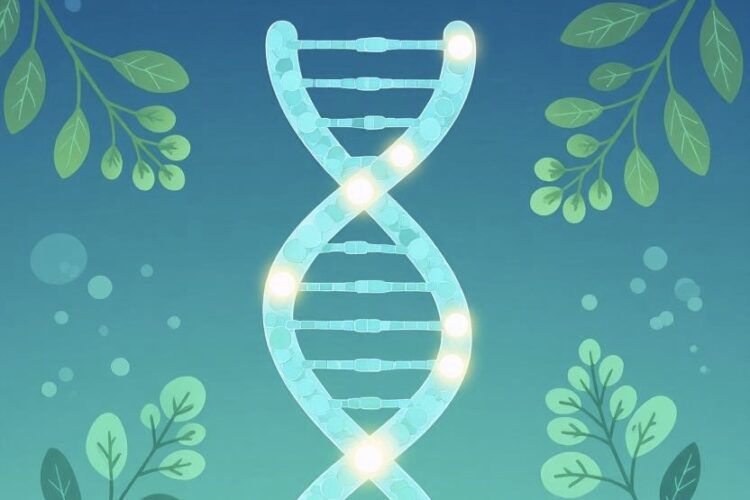Telomeres, protective caps at chromosome ends, shorten with each cell division, driving aging and diseases like cardiovascular issues, neurodegeneration, and dyskeratosis congenita. Telomerase, an enzyme with hTERT and TERC components, extends telomeres, supporting longevity. Natural activators like 08AGTLF from Centella asiatica (8.8-fold boost), oleanolic acid (5.9-fold), and TA-65 from Astragalus (2.2-fold) enhance telomerase, promoting immunity and reducing inflammation. Synthetic options like GV1001 show promise in cancer and anti-aging trials. While natural compounds are safer, cancer risks need monitoring. Available as supplements, they pair well with exercise. More human studies are needed, but telomerase activators offer hope for extending healthspan.
Long Version
In the quest for extended healthspan and longevity, telomeres emerge as critical guardians of cellular aging. These protective caps at chromosome ends prevent chromosomal instability and safeguard genetic integrity during cell division. However, with each replication, telomeres undergo shortening due to the end replication problem, a fundamental limitation of DNA polymerase. When telomeres reach critically short lengths, cells enter cellular senescence or trigger apoptosis, contributing to aging and age-related diseases. Telomerase, a ribonucleoprotein enzyme composed of the catalytic subunit hTERT and RNA component TERC, counters this by adding telomeric repeats, maintaining telomere length and enabling sustained cell division in stem cells and immune cells like fibroblasts and keratinocytes.
The shelterin complex—comprising proteins such as TRF1, TRF2, and POT1—regulates telomere structure and function, preventing erroneous DNA repair responses. Disruptions in this complex or telomere dysfunction can accelerate oxidative stress-induced damage, influenced by environmental factors and lifestyle choices. Telomere shortening acts as a biological clock, linking to diminished enzyme activity and heightened vulnerability to neurodegenerative disorders, cardiovascular diseases, osteodegenerative disorders, dyskeratosis congenita, and idiopathic pulmonary fibrosis.
Telomere Dysfunction and Its Link to Disease
Short telomeres exacerbate cellular aging by promoting inflammation and immune system decline, particularly in immune cells susceptible to CMV infections. This process underlies many age-related diseases, where telomere attrition correlates with reduced healthspan. For instance, in dyskeratosis congenita, mutations in telomerase components lead to premature telomere shortening and multi-organ failure. Similarly, idiopathic pulmonary fibrosis involves telomere dysfunction in lung fibroblasts, fostering fibrosis through persistent cellular senescence. Cardiovascular diseases arise from endothelial cell senescence, while neurodegenerative disorders like Alzheimer’s show telomere shortening in brain tissues, amplifying neuronal loss. Osteodegenerative disorders, including osteoporosis, reflect impaired bone cell proliferation due to telomere erosion.
Oxidative stress from environmental factors accelerates this, but lifestyle factors such as exercise and nutrient-rich diets can mitigate it, enhancing natural telomerase activation and supporting telomere repair. Interventions targeting telomerase hold promise for reversing these effects, offering a pathway to combat anti-aging challenges.
Strategies for Telomerase Activation
Telomerase activators, both natural and synthetic, aim to boost enzyme activity, lengthening telomeres and delaying cellular senescence. Natural products dominate due to their accessibility as dietary supplements, while synthetic options provide targeted potency in preclinical models.
Natural Activators
Derived from plants, these compounds leverage synergistic effects to enhance telomerase without the risks of gene therapy. TA-65, a purified cycloastragenol from Astragalus membranaceus, sets a benchmark with ~2.2-fold activation in human cells, promoting telomere lengthening and immune restoration. However, alternatives often surpass it.
08AGTLF, a high-purity triterpene extract from Centella asiatica (gotu kola), achieves the highest reported potency at up to 8.8-fold telomerase increase in peripheral blood mononuclear cells (PBMCs). Its mechanisms involve madecassic acid, supporting telomere repair, wound healing, and anti-inflammatory benefits. In vitro studies highlight superior telomere lengthening over TA-65, with human clinical studies pending; available as gotu kola supplements at 100-500mg daily.
Oleanolic acid (OA), a triterpenoid from olive leaves, apples, and Centella asiatica, delivers ~5.9-fold activation. It reduces inflammation, aids liver health, and shows anti-cancer potential in preclinical models, outperforming TA-65 in cell studies.
Broader Astragalus membranaceus extracts, like Nutrient 4, yield ~4.3-fold increases, acting as adaptogens for immunity and vitality in traditional Chinese medicine.
Maslinic acid (MA) from olive skins provides ~2-fold activation, with antioxidant properties enhancing metabolic health and skin rejuvenation. Comparable to TA-65, it offers synergistic effects in multi-nutrient formulas.
Multi-nutrient blends, incorporating ginseng, green tea, resveratrol, vitamins, and minerals, achieve 1.5-2-fold boosts by reducing oxidative stress. Affordable via multivitamins, they support broader wellness.
Other notables include ashwagandha extracts, which rival TA-65 in potency.
Synthetic and Experimental Activators
TAT2, an Astragalus-derived small molecule, matches cycloastragenol in screens, activating telomerase via the MAPK pathway. It enhances T-cell proliferation in HIV models, aiding immune restoration, though less commercialized.
GV1001, a synthetic hTERT peptide, indirectly activates telomerase in healthy contexts while targeting cancer cells as a vaccine. Phase II trials for pancreatic cancer reveal telomere effects in mice, with emerging anti-aging applications reducing neurodegeneration and prolonging lifespan in Alzheimer’s models. Prescription-only, it shows promise for immunotherapy.
Other synthetics like GRN510 mirror cycloastragenol structures.
Mechanisms, Benefits, and Evidence
These activators upregulate hTERT expression, countering telomere shortening and extending cell lifespan. Synergistic effects in formulas amplify efficacy, as seen in PattonProtocol-1 regimens. Benefits include bolstered immunity, reduced inflammation, enhanced wound healing, and slowed aging markers, improving longevity without fully reversing it.
In vitro studies on PBMCs and immune cells demonstrate activation, while preclinical models in mice show telomere elongation and disease mitigation. Human clinical studies, including randomized controlled trials and placebo-controlled studies, are limited but promising; TA-65 protocols report immune improvements. Pharmacokinetic studies confirm bioavailability, though more RCTs are needed.
Safety Considerations and Availability
While natural activators like Centella asiatica are generally recognized as safe (GRAS) with low side effects, concerns persist over cancer risk, as telomerase is upregulated in 85-90% of tumors—hence the dual role of telomerase inhibitors. Synthetics like GV1001 require monitoring. Long-term safety data is sparse; consult physicians, especially with telomere testing via labs like RepeatDx. Most naturals are over-the-counter on platforms like iHerb or Amazon; start low doses paired with exercise.
Future Directions in Telomerase Research
Advancing beyond current activators, gene therapy and novel synthetics could target stem cells for true longevity gains. Focus on RCTs, human clinical studies, and addressing research gaps in telomere dynamics will refine these tools, potentially transforming anti-aging medicine. As evidence mounts, telomerase activators stand as a cornerstone for extending healthspan.
Hashtags For Social Media
#TelomeraseActivators #AntiAging #Longevity #Telomeres #Biohacking #Telomerase #Healthspan #CellularRepair #TA65 #AstragalusExtract #CentellaAsiatica #OleanolicAcid #MaslinicAcid #GV1001 #NADBoost #Epithelon #GHKCU #AgeReversal #HealthyAging #WellnessJourney #ScienceOfAging #TelomereLength #ImmuneBoost #OxidativeStress #NaturalSupplements #PeptideTherapy #StemCellHealth #RegenerativeMedicine #BiohackYourBody #LiveLonger
Related Questions, Words, Phrases
what are telomerase activators | how do telomerase activators work | can telomerase activators slow aging | best natural telomerase activators | what is ta-65 for anti-aging | benefits of centella asiatica for telomeres | oleanolic acid telomere lengthening | how to boost telomerase naturally | synthetic telomerase activators explained | telomerase and longevity connection | astragalus extract for telomere health | maslinic acid anti-aging benefits | are telomerase activators safe | telomere shortening and aging | how does telomerase affect healthspan | natural supplements for telomere repair | gv1001 telomerase activator trials | can telomerase prevent age-related diseases | centella asiatica vs ta-65 potency | telomerase activation for immunity | lifestyle factors for telomere length | telomerase enzyme and cellular aging | best telomerase supplements to buy | tat2 telomerase activator benefits | how to test telomere length | telomerase and cancer risk concerns | multi-nutrient formulas for telomeres | telomerase activators for skin health | what is the shelterin complex | telomere dysfunction and disease | how to increase telomerase activity | telomerase activators in clinical studies | htert role in telomere maintenance | anti-aging benefits of telomerase | future of telomerase research






